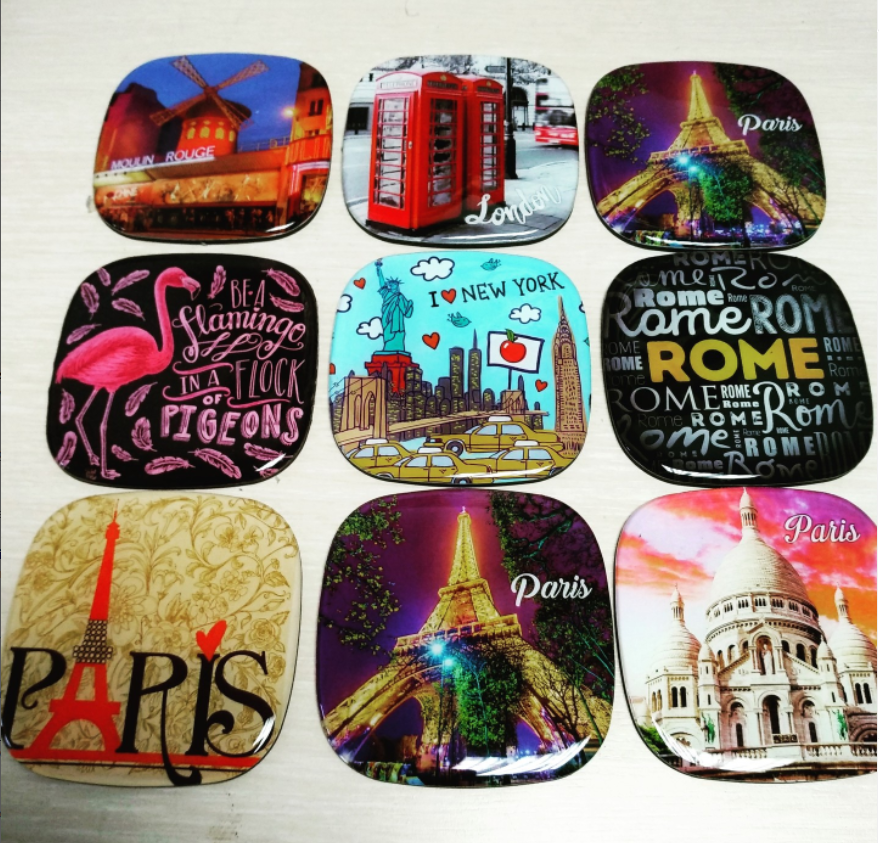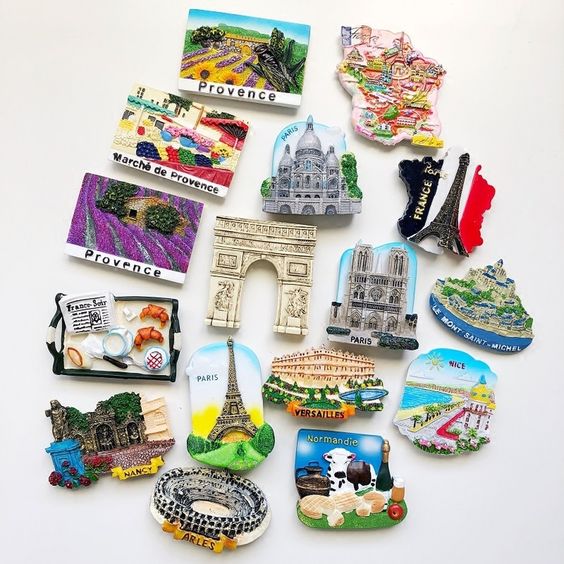Introduction
Global souvenir importers are constantly battling rising costs due to inflation, freight volatility, and inconsistent supplier pricing. Whether you’re a souvenir wholesaler, importer, or brand retailer sourcing custom resin products from China, understanding how to cut import costs and secure better deals with suppliers can significantly boost your margins. In this article, we’ll walk you through five proven strategies that successful importers use to optimize their landed costs and enhance negotiation outcomes with factories.
1. Understand and Optimize Your True Landed Cost

Before discussing savings, you need to know your actual landed cost. This goes beyond the unit price you receive in a quote. Landed cost includes:
- Product cost
- Shipping (air/sea/express)
- Customs duties and taxes
- Freight forwarding and brokerage fees
- Insurance
- Last-mile delivery (if applicable)
Failing to calculate these properly leads to underpricing and margin loss. Many first-time importers overlook hidden fees like inspection charges, port surcharges, or currency conversion losses. Utilize a reliable landed cost calculator or work with a customs broker to get precise per-unit figures.
For souvenir products like resin fridge magnets or snow globes, customs classifications under the HS code (Harmonized System) can greatly influence duties. For instance, a resin figure may fall under HS code 3926, while decorative figurines may go under 9505—each with different tariff implications.
Pro Tip: Regularly check for changes in HS code classifications and consult with freight experts to avoid overpaying on duties.
2. Choose the Right Incoterm to Shift Cost and Risk Effectively

Importers often accept whatever Incoterm the factory suggests. This is a mistake. Each Incoterm (EXW, FOB, CIF, DDP) transfers specific responsibilities and costs between buyer and seller. Choosing wisely can reduce hidden charges.
- EXW (Ex Works): You handle all logistics. Low factory pricing but high risk.
- FOB (Free on Board): Factory delivers to port; you manage sea freight and customs. Most common in China deals.
- CIF (Cost, Insurance, Freight): Seller covers up to destination port. Watch out for inflated freight charges.
- DDP (Delivered Duty Paid): Factory handles everything, including duties. High convenience, but often overpriced.
For souvenir importers handling bulk orders of custom resin souvenirs, FOB is usually the sweet spot—giving you control over freight without taking on early-stage logistics.
SEO Tip: Target long-tail keywords like “FOB vs CIF for souvenir importers” or “best Incoterm for bulk resin products” to attract decision-makers searching for trade strategy guidance.
3. Consolidate Shipments and Optimize Packaging

Shipping inefficiencies can quietly destroy profit margins. Many importers underestimate how volume, weight, and shipment frequency affect total costs. Here’s what seasoned buyers do:
- Consolidate smaller orders: Group multiple SKUs into a single shipment to reduce per-unit shipping rates.
- Schedule off-peak shipments: Avoid Chinese New Year and Q4 (peak freight season) when rates skyrocket.
- Redesign packaging: Optimize product packaging to reduce volumetric weight and avoid dimensional weight surcharges.
For example, modifying a resin photo frame box from 5cm thickness to 3cm could save you 15% in air freight fees.
Work with your supplier on bulk packaging options (e.g., 6 pieces per inner box, 48 per carton) to maximize container space.
Use keywords like “freight consolidation for souvenir importers”, “optimize packaging for international shipping”, and “volumetric weight cost reduction” to improve SEO reach.
4. Negotiate Factory Terms Based on Relationship and Volume
Better negotiation begins with preparation and long-term mindset. If you’re consistently ordering resin snow globes or fridge magnets in quantities of 1,200 pieces or more, you have leverage. Here’s how to use it:
- Benchmark pricing: Collect quotes from at least 3 suppliers for the same product. Use specs sheets to keep comparisons fair.
- Negotiate MOQ and tiered pricing: Factories are open to offering lower MOQ or bulk discounts if you commit to reorders.
- Build trust and cultural understanding: Chinese suppliers value relationships (guanxi). Respect their holidays, respond promptly, and visit if possible.
- Offer long-term partnership in exchange for terms: Many importers secure better rates or 60-day payment terms by projecting annual volume.
Importers should incorporate phrases like “MOQ negotiation tips for resin souvenirs”, “how to get factory discounts”, and “negotiate better supplier terms in China” in their blog posts or downloadable lead magnets.
Bonus: Create a supplier scorecard template for your buyers to evaluate vendors objectively.
5. Partner with a Freight Forwarder or Customs Broker to Avoid Errors

Logistics professionals can often save you more money than going DIY. Freight forwarders and brokers:
- Help classify goods correctly to avoid overpaying duties
- Navigate bonded warehousing or duty drawbacks
- Secure better shipping rates through volume aggregation
- Advise on country-specific import regulations
For instance, a customs broker may notice that your resin figurine qualifies for a duty reduction under a trade agreement you weren’t aware of.
Some freight partners also help with product inspections, document preparation, and insurance—saving you hours and costly mistakes.
Use SEO terms like “freight forwarder for resin souvenir import”, “reduce customs fees on Chinese goods”, or “how to choose a customs broker” in content and meta descriptions.
Data Comparison Table: How Optimization Impacts Cost
| Scenario | Unit Cost | Duty Rate | Freight & Fees | Total Landed Cost |
|---|---|---|---|---|
| Scenario A: No broker, EXW | $2.00 | 12% | $1.50 | $3.74 |
| Scenario B: FOB, no optimization | $1.85 | 10% | $1.20 | $3.25 |
| Scenario C: FOB, optimized | $1.75 | 8% | $0.95 | $2.84 |
With better Incoterms, freight planning, and duty management, importers can cut costs by 25% or more.
Conclusion
Sourcing quality souvenirs at the right price is both an art and a science. By focusing on landed cost accuracy, optimizing shipping, and building supplier relationships, you can dramatically increase your profitability and reduce risks. These five strategies are proven across industries—and especially powerful for buyers of resin crafts and tourism souvenirs.
If you’re ready to improve your margins, start by benchmarking your current costs, reviewing your Incoterms, and reaching out to expert freight partners.
Want a free landed cost calculator spreadsheet or MOQ negotiation template? Contact us or download it directly on craftmgf.com.
Frequently Asked Questions (FAQ)
Q1: What is a landed cost and why is it important?
A: Landed cost is the total cost of a product including shipping, duties, and all logistics fees. It determines your true per-unit cost.
Q2: Which Incoterm is best for importing resin souvenirs from China?
A: FOB is typically the best balance between cost control and supplier responsibility.
Q3: How can I reduce my souvenir import duties?
A: Classify products under the correct HS code, work with brokers, and explore applicable trade agreements.
Q4: Can packaging really affect shipping cost?
A: Absolutely. Volumetric weight is often the driver of air freight costs, not actual weight.
- Crafting Your Brand’s Identity: The Power of Private Label & Custom Souvenirs - November 12, 2025
- Resin vs Ceramic for Bulk Souvenirs: A B2B Comparison of Cost, Durability, and Shipping Weight - November 5, 2025
- Strategic Content Roadmap: Positioning CraftMGF.com as the Global Authority in Custom Souvenir Sourcing - October 30, 2025




